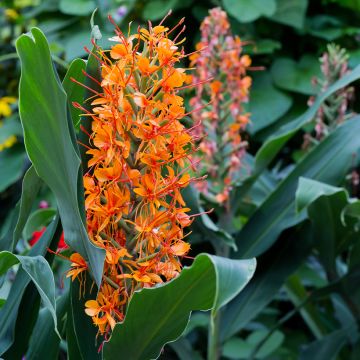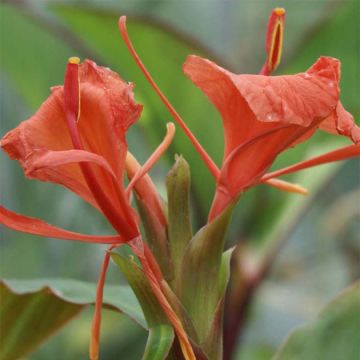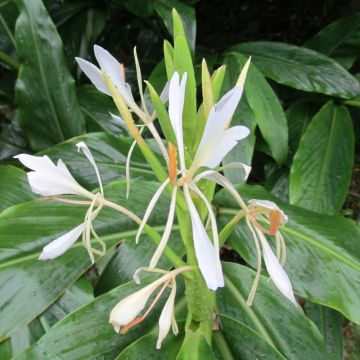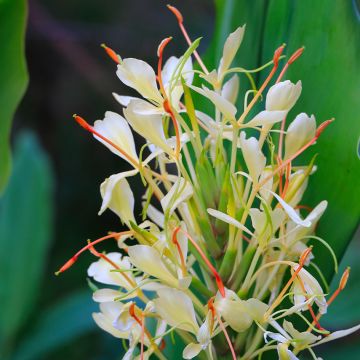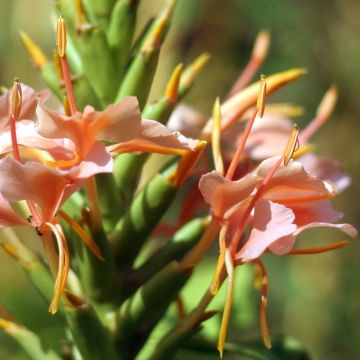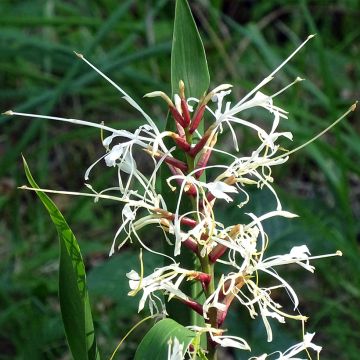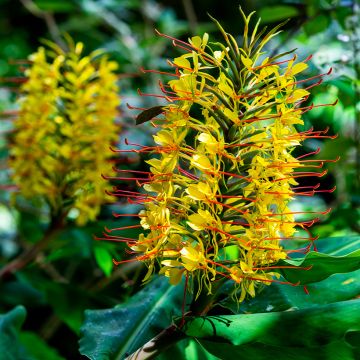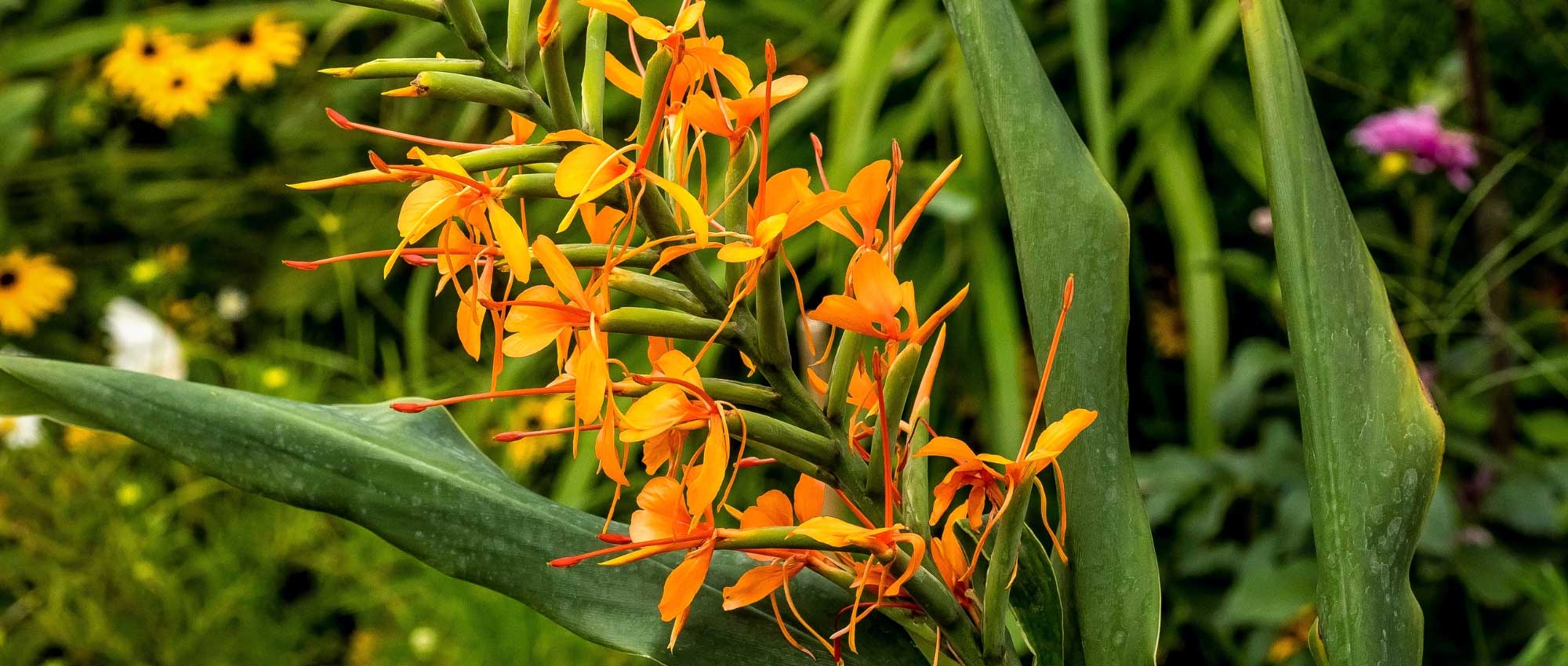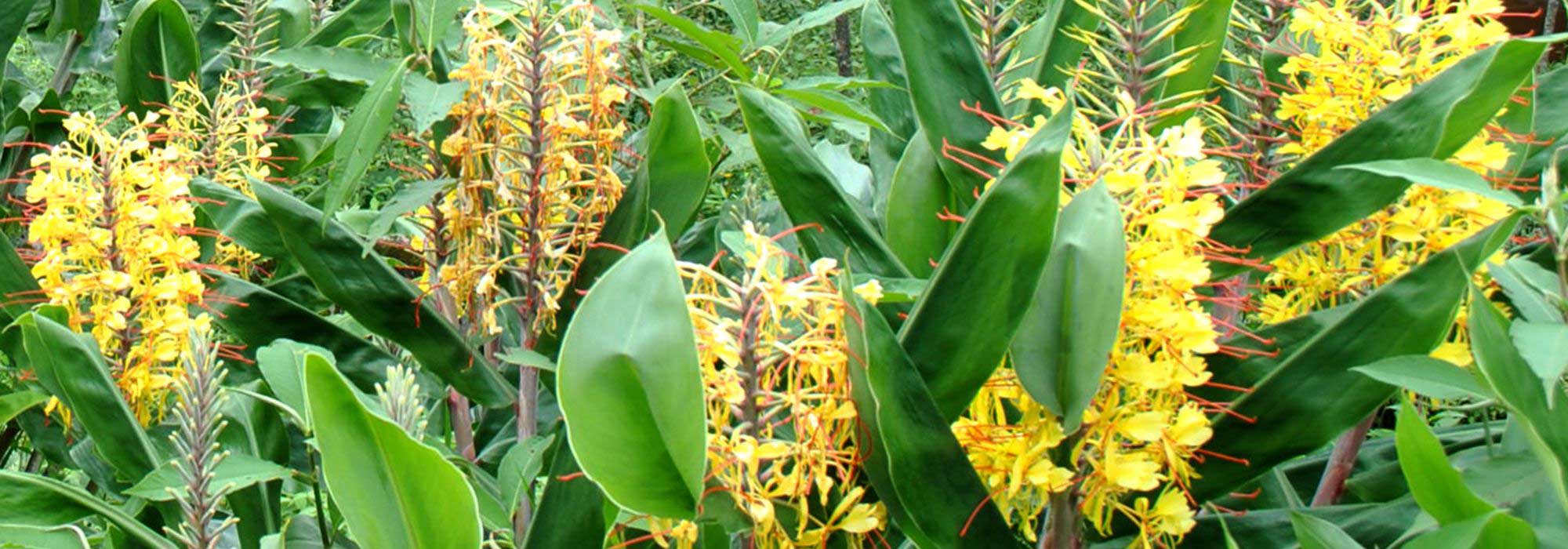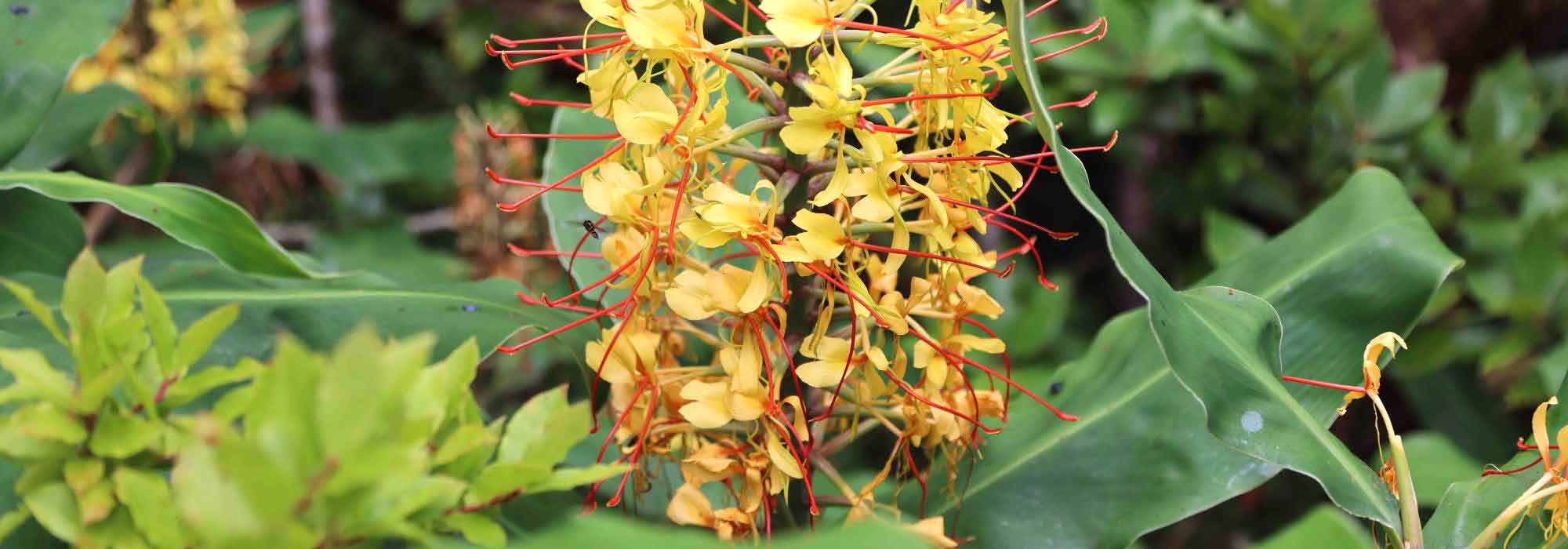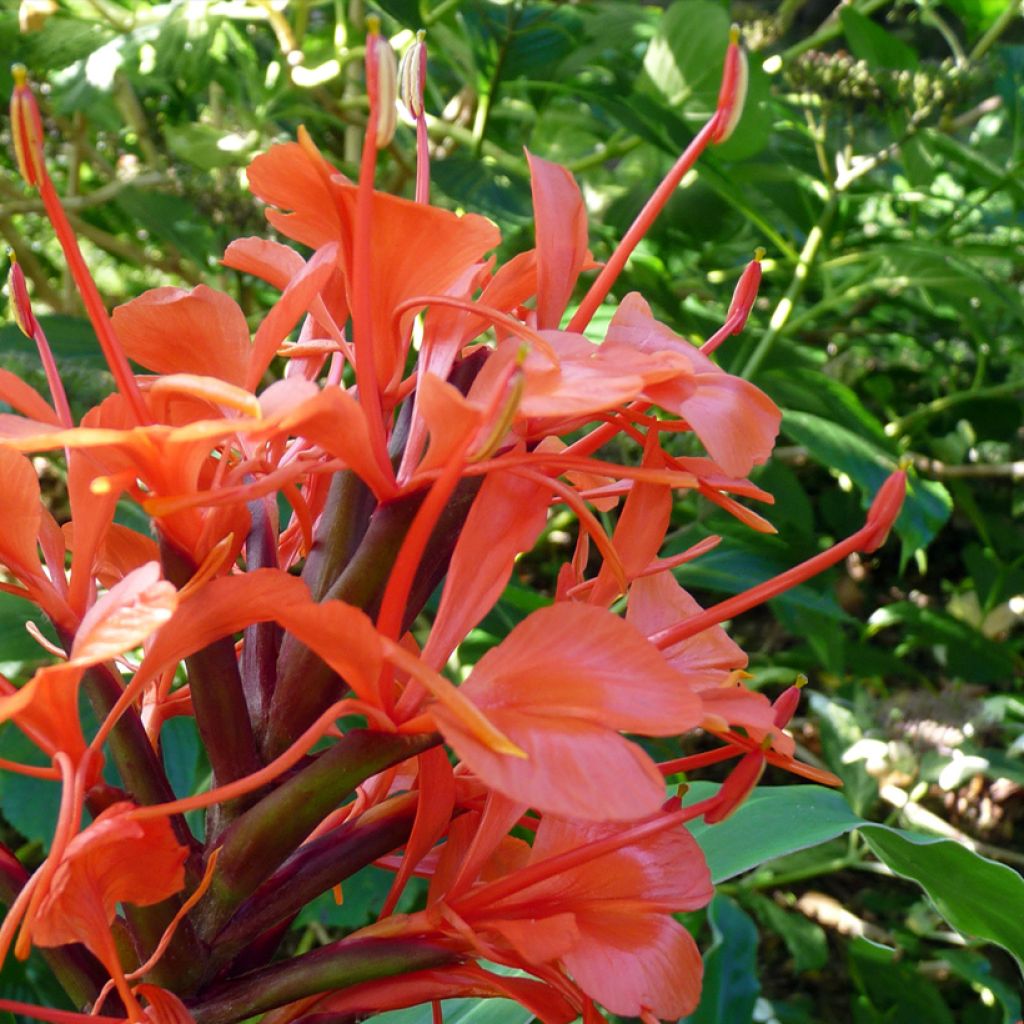

Hedychium rubrum (deceptum) - Gingembre d'ornement
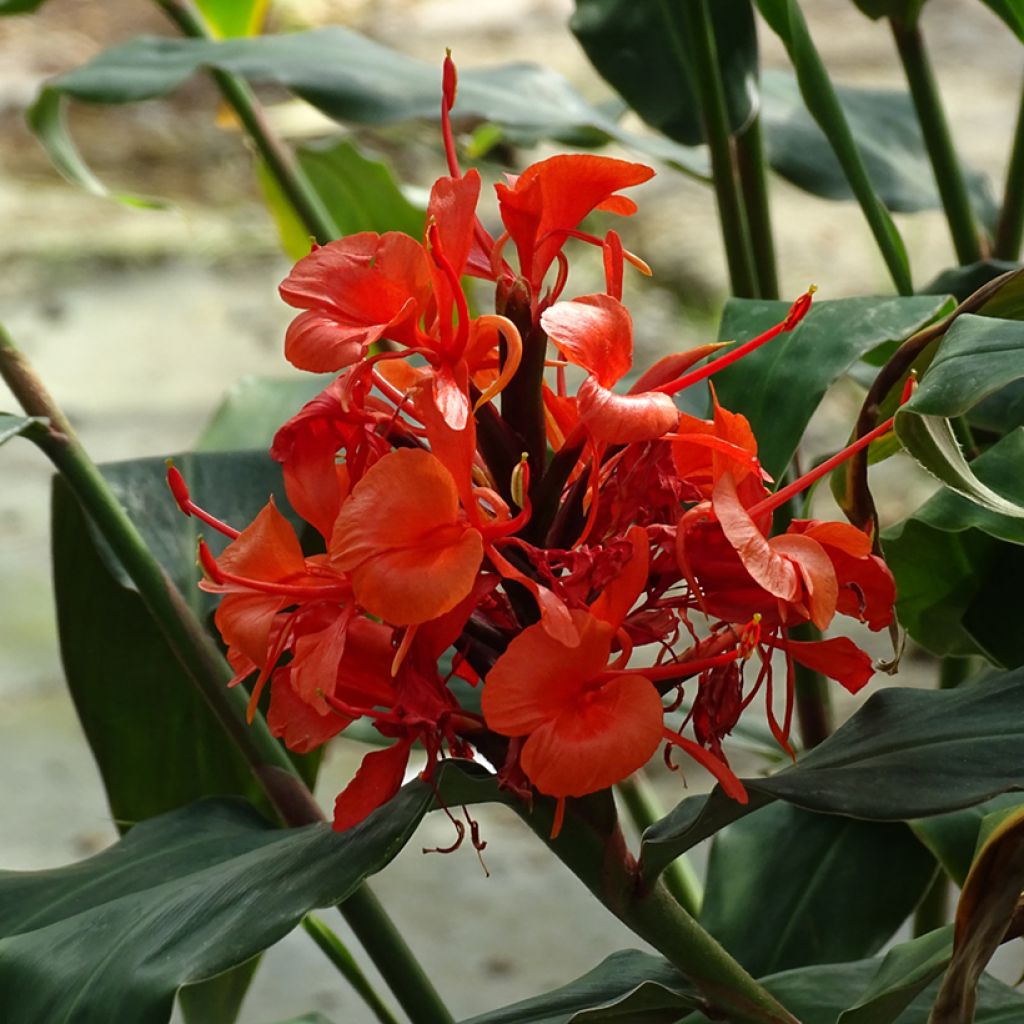

Hedychium rubrum (deceptum) - Gingembre d'ornement
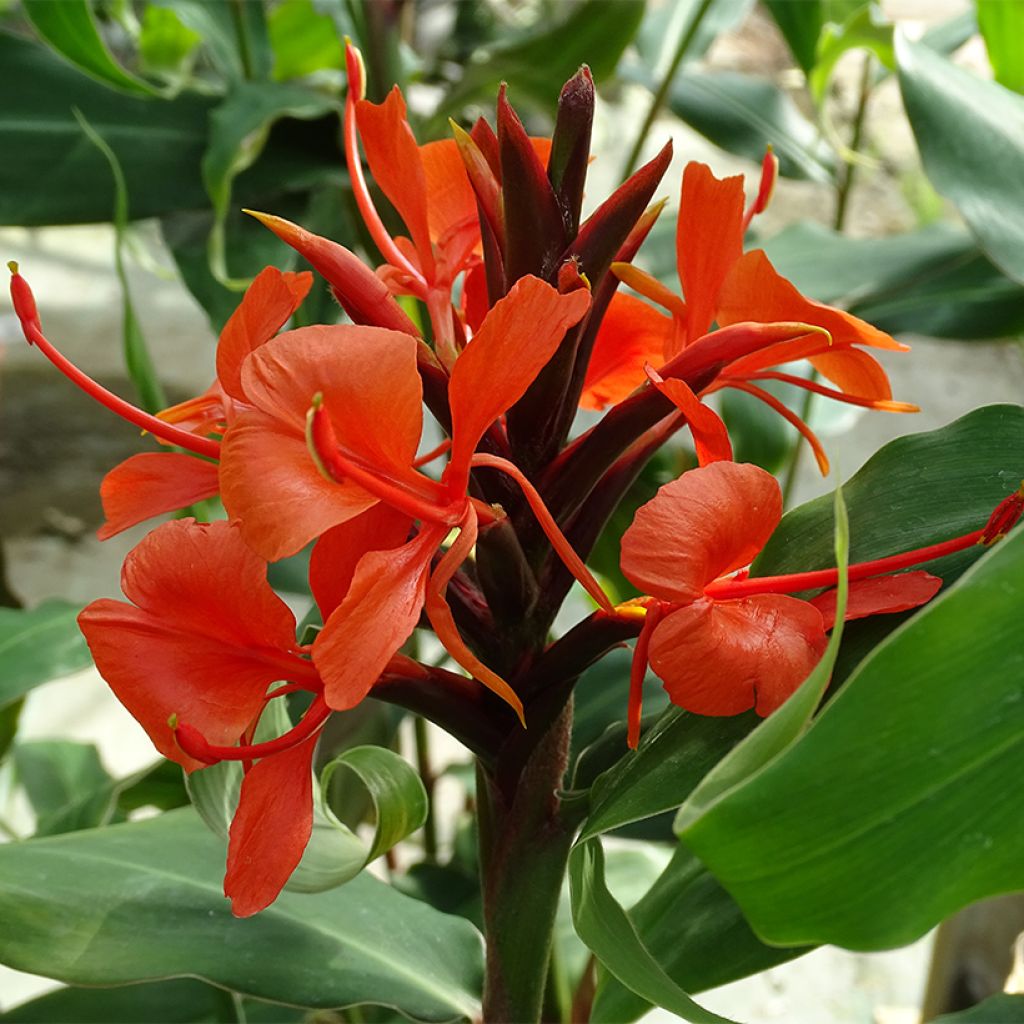

Hedychium rubrum (deceptum) - Gingembre d'ornement
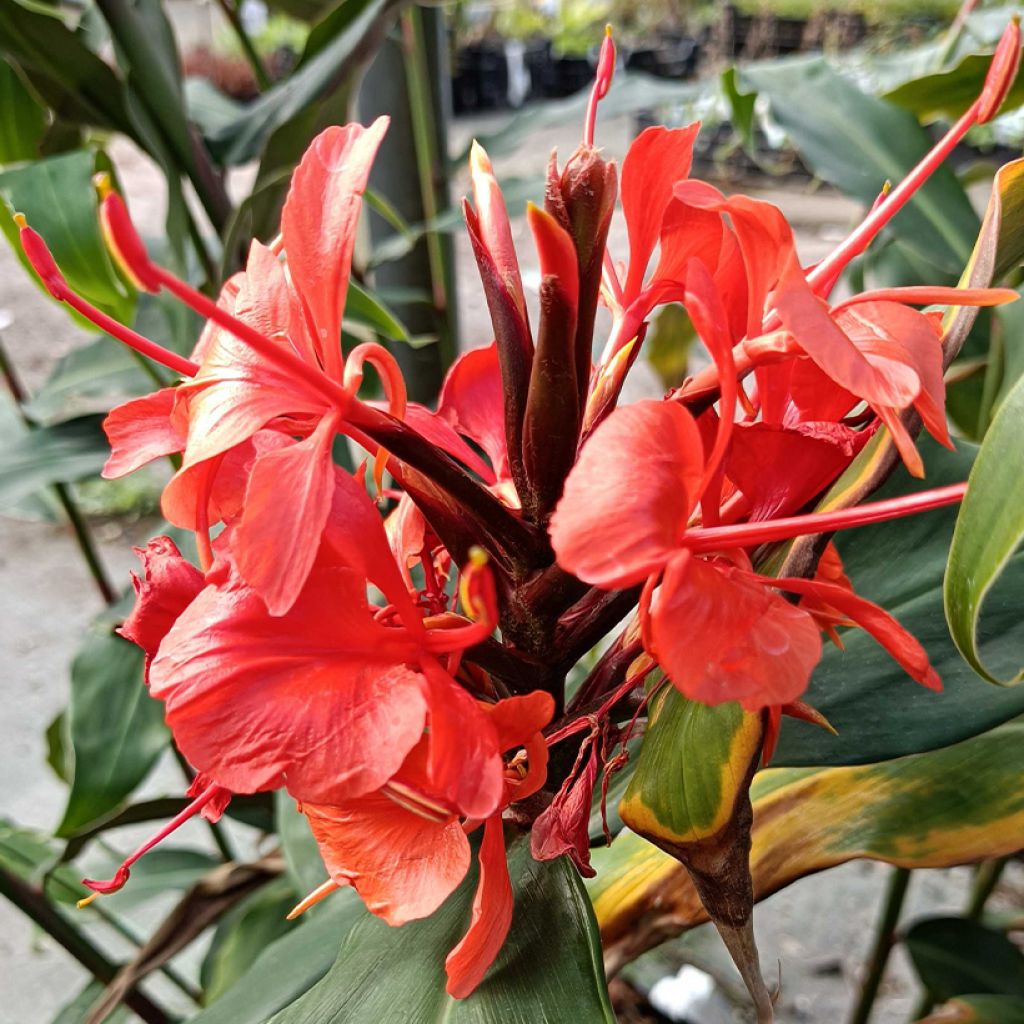

Hedychium rubrum (deceptum) - Gingembre d'ornement
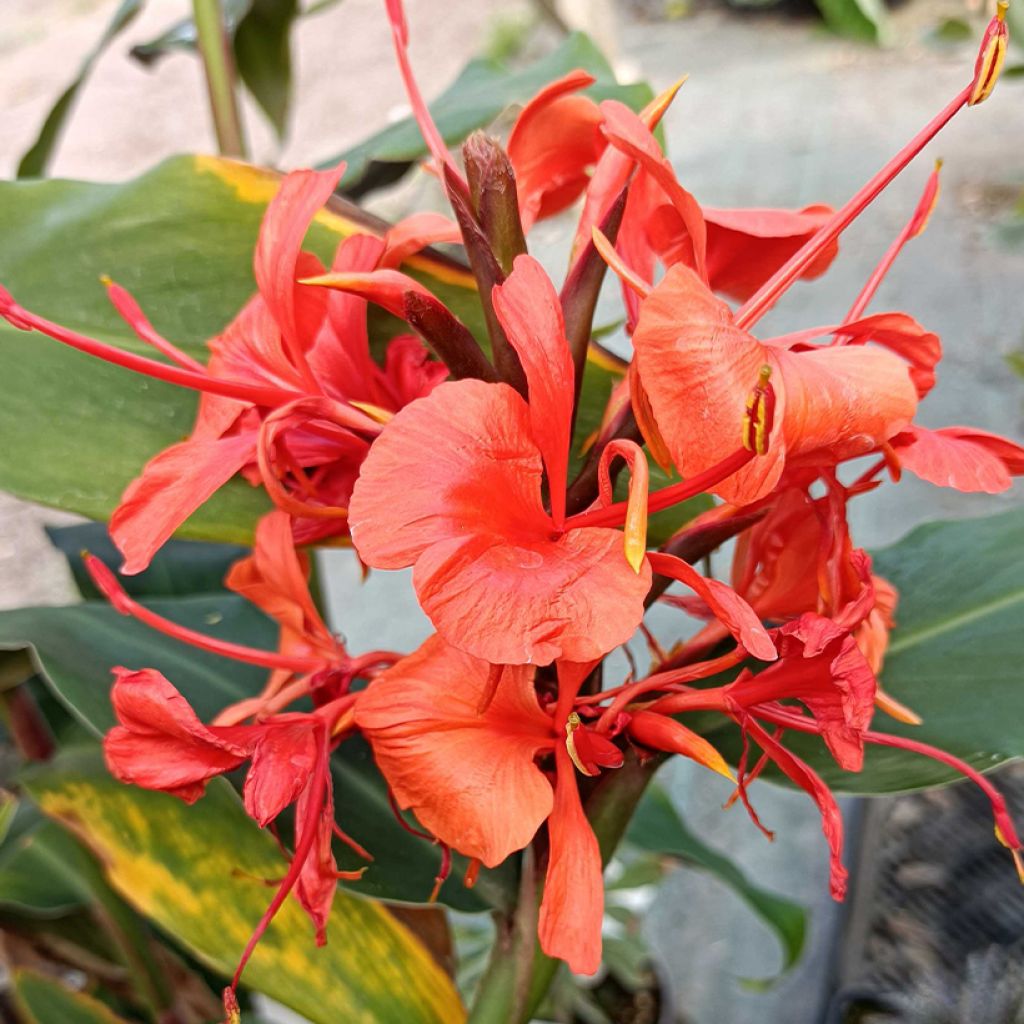

Hedychium rubrum (deceptum) - Gingembre d'ornement
Hedychium deceptum
Hedychium deceptum
Ginger Lily
Special offer!
Receive a €20 voucher for any order over €90 (excluding delivery costs, credit notes, and plastic-free options)!
1- Add your favorite plants to your cart.
2- Once you have reached €90, confirm your order (you can even choose the delivery date!).
3- As soon as your order is shipped, you will receive an email containing your voucher code, valid for 3 months (90 days).
Your voucher is unique and can only be used once, for any order with a minimum value of €20, excluding delivery costs.
Can be combined with other current offers, non-divisible and non-refundable.
Why not try an alternative variety in stock?
View all →This plant carries a 12 months recovery warranty
More information
We guarantee the quality of our plants for a full growing cycle, and will replace at our expense any plant that fails to recover under normal climatic and planting conditions.
Does this plant fit my garden?
Set up your Plantfit profile →
Description
Hedychium deceptum (formerly known as H. rubrum) is a large ornamental ginger with a spectacular flowering, thanks to its generosity and its flamboyant orange colour. This Indian botanical species easily blooms and its rootstock tolerates cold weather quite well, down to -10/-12°C in healthy soil. This allows it to be adopted in gardens in many regions. It is a large rhizomatous perennial plant that forms a clump of tall leafy stems, from which magnificent spike inflorescences emerge in late summer. An exceptional plant for amateurs and enthusiasts!
Hedychium deceptum is native to northeastern India, in the Assam region bordered by the Himalayas to the north and various mountain ranges to the south. It belongs to the Zingiberaceae family. This Hedychium produces fleshy rootstocks and leafy stems, forming a large clump that will reach approximately 1.50m (5ft) in height at maturity. The vegetation spreads laterally over time, forming large clumps, 1m (3ft) wide. In spring, the plant develops pseudo-trunks carrying long lanceolate leaves, shiny green in colour, very ornamental. It flowers in September in mild climates, and in autumn elsewhere. The inflorescence is composed of numerous small bright orange flowers, sometimes tinged with golden yellow, somewhat resembling those of Gauras with their compound structure of small petals surrounding protruding stamens. They attract many bees. The leaves, opposite, are arranged regularly on the stems. The plant disappears in autumn, cut back by frost, but regrows from the stump in spring.
Superb perennial plants to be used without moderation in exotic gardens, Hedychiums thrive in rich and deep soil, rather dry in winter, but moist to wet during the growing season, always well-drained. They also require a warm and sheltered location, as the flowers, all more or less fragrant, sometimes bloom late depending on the region. Moreover, their vegetation can be severely damaged by strong winds. In the garden, one can create a tropical-inspired massif, for example by combining Hedychium deceptum with a Chinese palm tree, a Japanese Banana Tree, with a backdrop of castor oil plant and giant Canna. In mild climates, the ornamental ginger will accompany the flowering of Abutilons, Cassia, Lantana, Brugmansia and other Daturas. In our cold regions, it can be cultivated like a Canna. It thrives when grown in a pot, as this plant likes to have its roots cramped. Moreover, in areas with severe frosts, Hedychium deceptum can be considered from November to March as a very beautiful conservatory or veranda plant, as it will retain its beautiful foliage there.
Hedychium deceptum in pictures
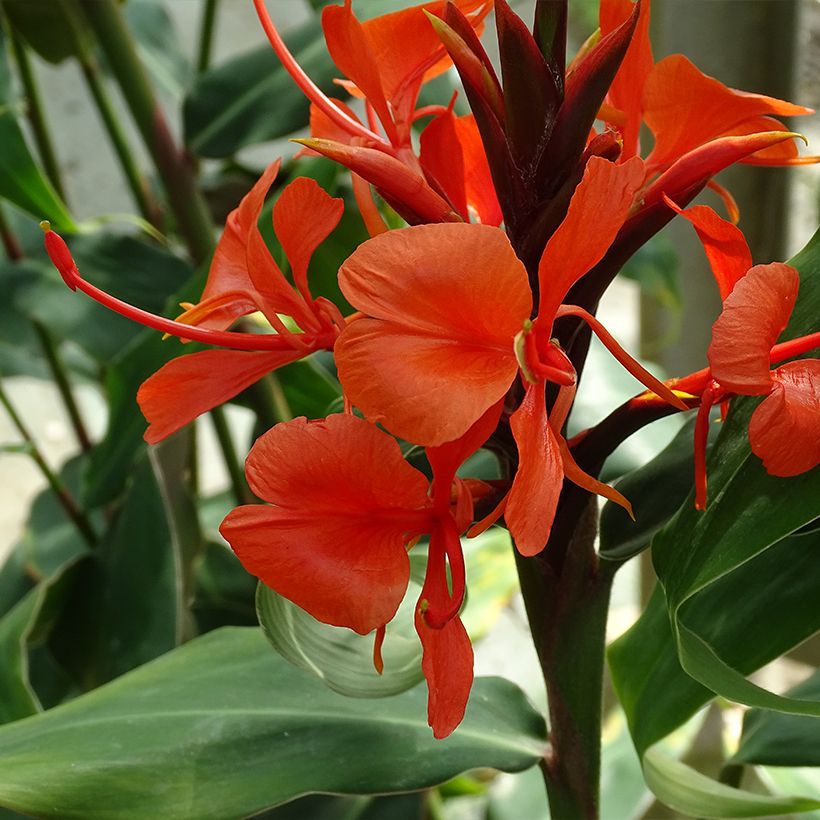

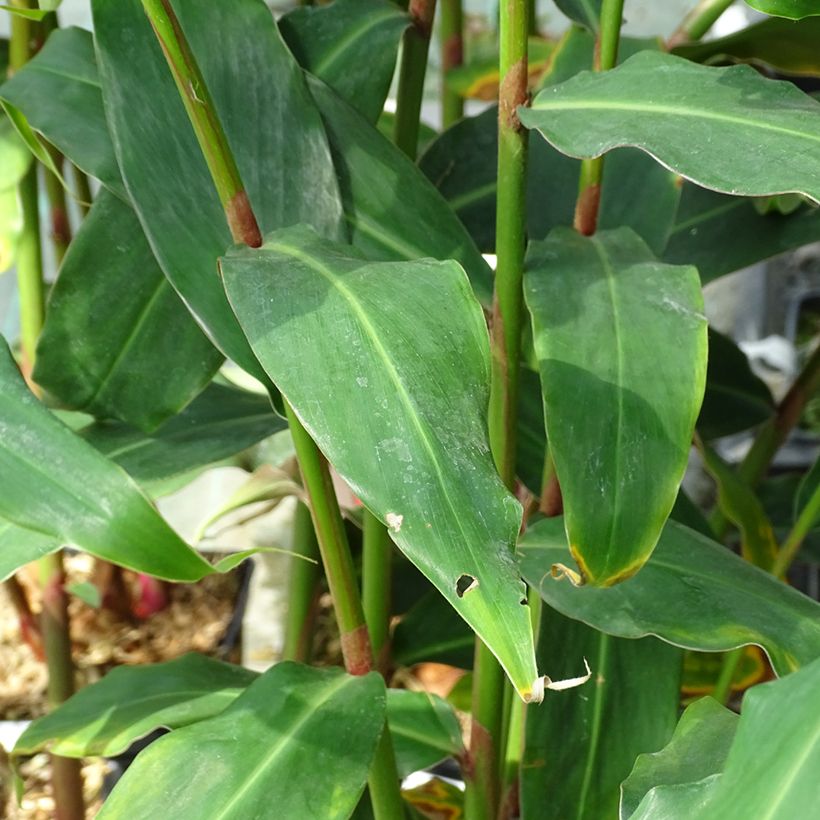

Flowering
Foliage
Plant habit
Botanical data
Hedychium
deceptum
Zingiberaceae
Ginger Lily
India
Other Hedychium
View all →Planting and care
Hedychiums are renowned for being tender plants due to their poor cold resistance. Hedychium rubrum is one of the hardiest varieties, its rhizome is able to withstand negative temperature spikes of around -12 °C under a thick protective mulch. We leave the stumps in the ground for about 9 to 10 years and none have died so far. As soon as the first frosts arrive, we cut back the foliage to ground level and then mulch the stumps with a thick layer of dead leaves. This has always been sufficient so far. You can also dig up the stump and follow the same practice as with Cannas. Choose a warm and sunny location, sheltered from strong winds. In partial shade, Hedychium tends to grow taller, but its foliage is sensitive to the burn of too harsh sunlight. The soil should remain moist throughout the growing season. A rich, deep soil with proper drainage is best suited. Growing in large containers is entirely possible. In this case, the plant will be stored frost-free, in a bright and unheated room during winter. Watering should be reduced in winter and abundant from spring to summer.
Planting period
Intended location
Care
Planting & care advice
This item has not been reviewed yet - be the first to leave a review about it.
Haven't found what you were looking for?
Hardiness is the lowest winter temperature a plant can endure without suffering serious damage or even dying. However, hardiness is affected by location (a sheltered area, such as a patio), protection (winter cover) and soil type (hardiness is improved by well-drained soil).

Photo Sharing Terms & Conditions
In order to encourage gardeners to interact and share their experiences, Promesse de fleurs offers various media enabling content to be uploaded onto its Site - in particular via the ‘Photo sharing’ module.
The User agrees to refrain from:
- Posting any content that is illegal, prejudicial, insulting, racist, inciteful to hatred, revisionist, contrary to public decency, that infringes on privacy or on the privacy rights of third parties, in particular the publicity rights of persons and goods, intellectual property rights, or the right to privacy.
- Submitting content on behalf of a third party;
- Impersonate the identity of a third party and/or publish any personal information about a third party;
In general, the User undertakes to refrain from any unethical behaviour.
All Content (in particular text, comments, files, images, photos, videos, creative works, etc.), which may be subject to property or intellectual property rights, image or other private rights, shall remain the property of the User, subject to the limited rights granted by the terms of the licence granted by Promesse de fleurs as stated below. Users are at liberty to publish or not to publish such Content on the Site, notably via the ‘Photo Sharing’ facility, and accept that this Content shall be made public and freely accessible, notably on the Internet.
Users further acknowledge, undertake to have ,and guarantee that they hold all necessary rights and permissions to publish such material on the Site, in particular with regard to the legislation in force pertaining to any privacy, property, intellectual property, image, or contractual rights, or rights of any other nature. By publishing such Content on the Site, Users acknowledge accepting full liability as publishers of the Content within the meaning of the law, and grant Promesse de fleurs, free of charge, an inclusive, worldwide licence for the said Content for the entire duration of its publication, including all reproduction, representation, up/downloading, displaying, performing, transmission, and storage rights.
Users also grant permission for their name to be linked to the Content and accept that this link may not always be made available.
By engaging in posting material, Users consent to their Content becoming automatically accessible on the Internet, in particular on other sites and/or blogs and/or web pages of the Promesse de fleurs site, including in particular social pages and the Promesse de fleurs catalogue.
Users may secure the removal of entrusted content free of charge by issuing a simple request via our contact form.
The flowering period indicated on our website applies to countries and regions located in USDA zone 8 (France, the United Kingdom, Ireland, the Netherlands, etc.)
It will vary according to where you live:
- In zones 9 to 10 (Italy, Spain, Greece, etc.), flowering will occur about 2 to 4 weeks earlier.
- In zones 6 to 7 (Germany, Poland, Slovenia, and lower mountainous regions), flowering will be delayed by 2 to 3 weeks.
- In zone 5 (Central Europe, Scandinavia), blooming will be delayed by 3 to 5 weeks.
In temperate climates, pruning of spring-flowering shrubs (forsythia, spireas, etc.) should be done just after flowering.
Pruning of summer-flowering shrubs (Indian Lilac, Perovskia, etc.) can be done in winter or spring.
In cold regions as well as with frost-sensitive plants, avoid pruning too early when severe frosts may still occur.
The planting period indicated on our website applies to countries and regions located in USDA zone 8 (France, United Kingdom, Ireland, Netherlands).
It will vary according to where you live:
- In Mediterranean zones (Marseille, Madrid, Milan, etc.), autumn and winter are the best planting periods.
- In continental zones (Strasbourg, Munich, Vienna, etc.), delay planting by 2 to 3 weeks in spring and bring it forward by 2 to 4 weeks in autumn.
- In mountainous regions (the Alps, Pyrenees, Carpathians, etc.), it is best to plant in late spring (May-June) or late summer (August-September).
The harvesting period indicated on our website applies to countries and regions in USDA zone 8 (France, England, Ireland, the Netherlands).
In colder areas (Scandinavia, Poland, Austria...) fruit and vegetable harvests are likely to be delayed by 3-4 weeks.
In warmer areas (Italy, Spain, Greece, etc.), harvesting will probably take place earlier, depending on weather conditions.
The sowing periods indicated on our website apply to countries and regions within USDA Zone 8 (France, UK, Ireland, Netherlands).
In colder areas (Scandinavia, Poland, Austria...), delay any outdoor sowing by 3-4 weeks, or sow under glass.
In warmer climes (Italy, Spain, Greece, etc.), bring outdoor sowing forward by a few weeks.






























